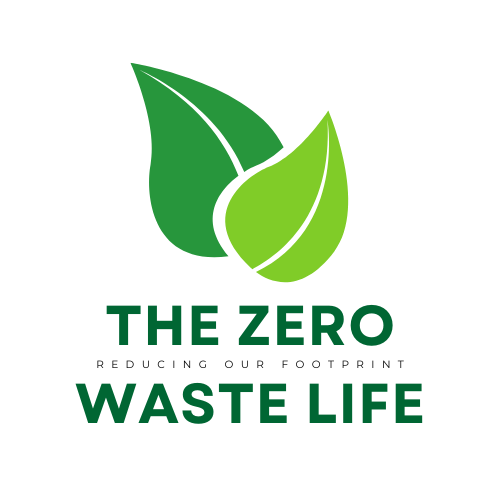Hey there, folks! I know firsthand how frustrating it can be to find an old bottle of vinegar in the cupboard, only to realize it’s past its prime. But fear not! Before you toss it in the trash, let me share with you some creative uses and handy tips for repurposing that old vinegar.
Believe it or not, there are plenty of ways to utilize expired or unused vinegar in your everyday life. From cleaning solutions to gardening hacks, vinegar can be a cost-effective and eco-friendly alternative to store-bought products.
So, let’s dive in and explore the many possibilities for repurposing old vinegar!
Key Takeaways:
- Don’t throw away expired or unused vinegar.
- There are many creative uses and handy tips for repurposing old vinegar.
- Vinegar can be a cost-effective and eco-friendly alternative to store-bought products.
Homemade Cleaning Solutions with Old Vinegar
If you’re looking for a cost-effective and eco-friendly alternative to store-bought cleaning solutions, old vinegar is your go-to product. Not only does it save you money, but it also eliminates the need for harsh chemicals in your home. Here are some recipes and instructions for using old vinegar as a homemade cleaner:
| Cleaning Task | Recipe/Instructions |
|---|---|
| Stain Removal | Mix equal parts vinegar and water, apply to stain, let sit for 30 minutes, and then wash as usual. |
| Deodorizing Surfaces | Mix 1 part vinegar and 1 part water in a spray bottle, then spray onto surfaces as needed. |
| Window Cleaning | Mix 2 parts water and 1 part vinegar, apply to windows with a sponge or cloth, and then dry with a squeegee or paper towel. |
Using old vinegar for cleaning is not only effective but also has several additional benefits. For one, vinegar is a natural disinfectant and can kill many types of bacteria and viruses. It’s also safe to use around children and pets and won’t harm the environment. So next time you’re looking to clean your home, reach for your old vinegar instead of commercial products.
Image source: 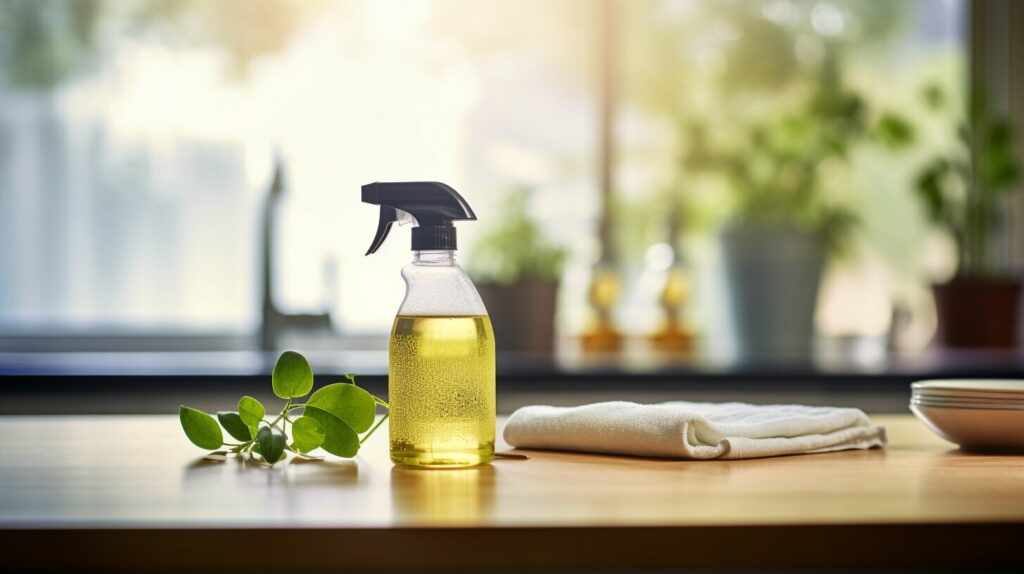
Preserving and Pickling with Old Vinegar
Don’t let expired vinegar go to waste! You can still use it for preserving and pickling. In fact, the acidity in vinegar is the key to preserving food safely and keeping it from spoiling.
One traditional use for vinegar is pickling vegetables. You can use an old vinegar for pickling cucumbers, carrots, peppers, and many other vegetables. Here’s a simple recipe for pickling cucumbers:
| Ingredients | Instructions |
|---|---|
| 2 lbs. fresh cucumbers | Wash the cucumbers and cut them into spears or slices. |
| 2 cups old vinegar | In a saucepan, heat the vinegar until it comes to a boil. |
| 1 cup water | Add water to the vinegar and return to a boil. |
| 1/4 cup sugar | Add sugar to the vinegar mixture and stir until dissolved. |
| 2 tbsp. salt | Add salt to the vinegar mixture and stir until dissolved. |
| 2 garlic cloves, minced | Place the cucumber slices or spears in a jar or bowl with the minced garlic. |
| 1 tsp. dill seeds | Add dill seeds to the jar or bowl with the cucumbers and garlic. |
| 1 tbsp. black peppercorns | Add black peppercorns to the jar or bowl with the cucumbers, garlic, and dill seeds. |
| Pour the hot vinegar mixture over the cucumbers and spices, making sure the cucumbers are completely covered. | |
| Let the cucumbers cool to room temperature, then cover and refrigerate for at least 24 hours before serving. |
When using old vinegar in pickling or preserving, it’s important to follow safe food handling practices. Use only glass or food-grade plastic containers, and make sure they are thoroughly cleaned and sanitized before use. Additionally, make sure to store your preserved foods properly to avoid contamination or spoilage.
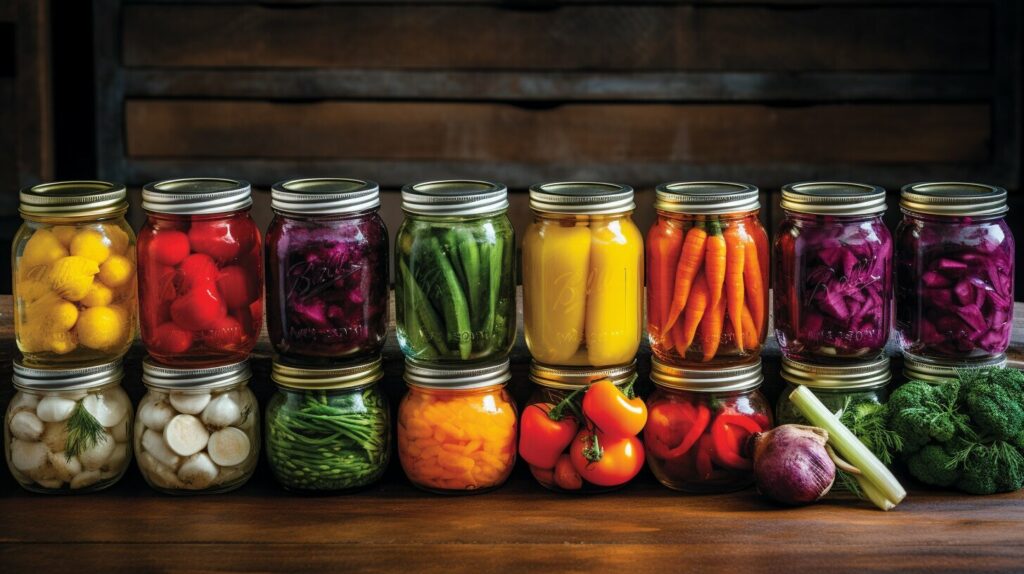
Remember, there are many ways to repurpose old vinegar instead of throwing it away. Pickling vegetables is just one example of how old vinegar can still be useful in the kitchen. Stay tuned for more creative uses and handy tips!
Cooking with Expired Vinegar
Did you know that expired vinegar can still be used in cooking? While the flavor may not be as potent as fresh vinegar, there are certain dishes and marinades where the flavor alteration won’t be noticeable. Plus, it’s a great way to avoid wasting vinegar that may have otherwise gone unused.
If you’re unsure about using expired vinegar in your cooking, you can always do a taste test before adding it to your dish. Simply dip a toothpick in the vinegar and taste a small amount to gauge the flavor.
One delicious way to use expired vinegar is in a marinade for meat or fish. Mix together the expired vinegar with some oil, herbs, and spices, then let the meat or fish sit in the mixture for a few hours before cooking. The vinegar will help tenderize the meat while infusing it with flavor.
Another way to use expired vinegar is in dressings for salads or vegetables. Combine the vinegar with some oil, honey, and mustard for a zesty and tangy dressing.
| Recipe: | Expired Vinegar Marinade |
|---|---|
| Ingredients: |
|
| Instructions: |
|

Don’t let expired vinegar go to waste! Try incorporating it into your cooking for a cost-effective and flavor-packed addition to your meals.
DIY Projects with Old Vinegar
If you’re someone who enjoys being crafty and creative, then you’ll love these DIY projects using old vinegar. Not only are these projects fun to make, but they’re also eco-friendly and budget-friendly.
One creative way to use old vinegar is for natural dyeing. Simply boil old vinegar with plant-based materials such as onion skins, berries, or even avocado pits to create a beautiful, earthy hue on fabrics. You can experiment with different materials and combinations to achieve unique colors.
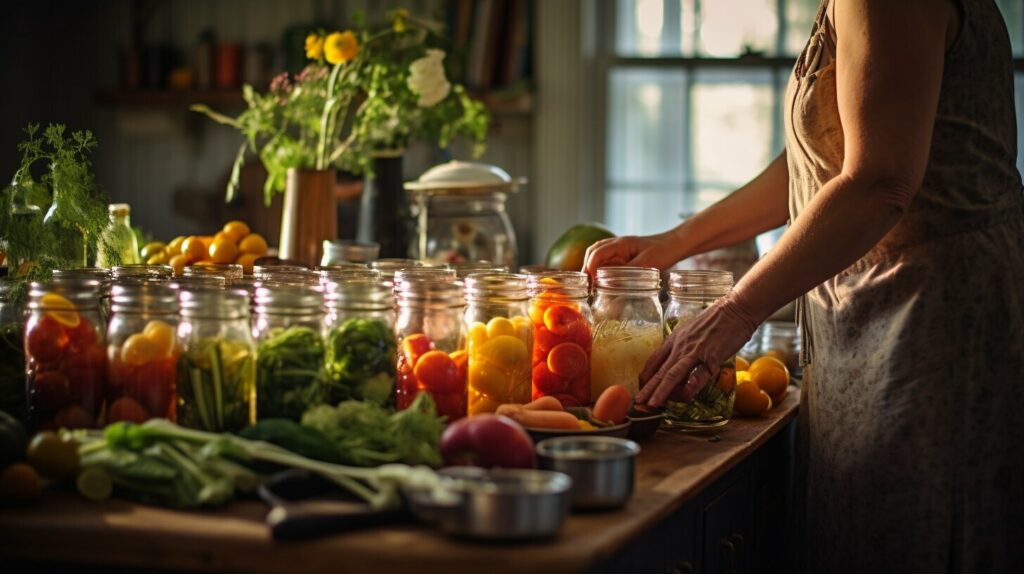
If you’re looking for a natural air freshener, try making a vinegar-based spray. Mix equal parts water and old vinegar in a spray bottle, add a few drops of your favorite essential oil, and voila! A refreshing and non-toxic air freshener.
Another fun project is creating a vinegar-based solution to clean garden tools. Simply mix equal parts old vinegar and water in a large container, soak your garden tools for a few minutes, and then scrub off any dirt or grime. Your tools will be clean and ready for your next gardening session.
There are so many creative ways to repurpose old vinegar. Don’t throw it away just yet! Try out these DIY projects and see what else you can come up with.
Repurposing Old Vinegar for Gardening
As an avid gardener, I am always looking for ways to repurpose household items in my garden. Old vinegar is one such item that can be put to great use in the garden.
Vinegar is a natural weed killer and can be used to get rid of unwanted plants in your garden. Mix one part vinegar with one part water and apply it directly to the weeds, being careful not to spray it on the plants you want to keep. This method is most effective on young weeds.
Old vinegar can also be used as a natural fertilizer or soil enhancer. Simply mix one cup of vinegar with one gallon of water and use it to water your plants. The acidic properties of vinegar are believed to help improve soil quality and growth.
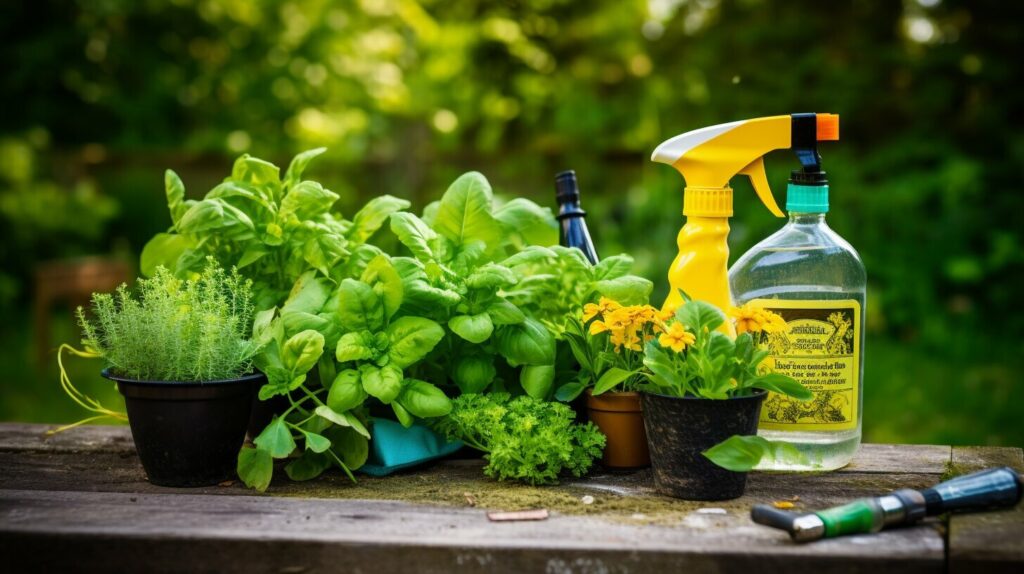
Additionally, vinegar can be used as a pest deterrent. Mix two tablespoons of vinegar with one quart of water and spray it on plants to deter insects. This method is most effective on plants that are not sensitive to acidic solutions.
When using vinegar in the garden, it’s important to keep in mind that too much vinegar can harm plants, so use it sparingly. Also, be sure to only use vinegar that is no longer suitable for consumption, as it may contain impurities that could harm your plants.
Removing Odors with Old Vinegar
One of my favorite ways to use old vinegar is as a natural odor remover. It’s amazing how effective it can be at neutralizing unpleasant smells throughout the house!
When it comes to removing odors, there are many surfaces and household items that can benefit from a vinegar treatment. For example, if your carpets or upholstery are starting to smell a little funky, try mixing equal parts vinegar and water in a spray bottle and misting the affected areas. Allow the solution to sit for 10-15 minutes, then blot away excess moisture with a clean cloth. Voila! Your fabrics should be smelling fresh and clean again.
Another great use for vinegar is to deodorize shoes. Simply soak a small washcloth in vinegar and place it inside each stinky shoe. Let the vinegar sit overnight to fully absorb the odors. Afterward, remove the washcloths and let the shoes air dry.
But my favorite odor-eliminating use for vinegar is on my kitchen cutting boards. After chopping strong-smelling foods like onions or garlic, I sprinkle a little baking soda on my cutting board and then rub it with a cut lemon half. Next, I pour a little vinegar over the board and let it bubble and fizz. Finally, I rinse the board with hot water and dry it well. My cutting board always smells fresh and clean after this treatment!
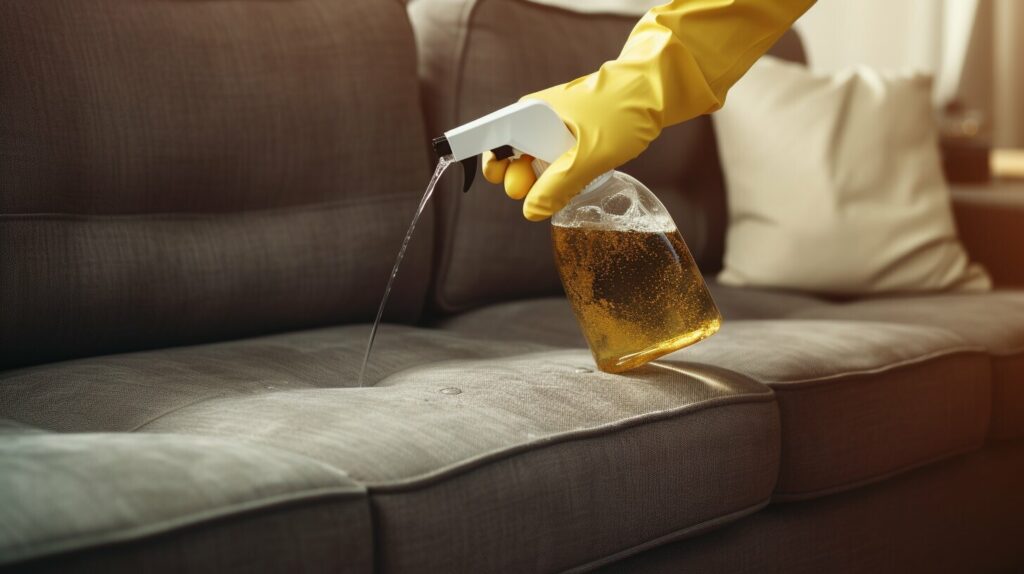
Note: Keep in mind that while vinegar is an excellent natural deodorizer, it is not suitable for every surface. Be sure to test a small, inconspicuous area before applying vinegar to carpets, upholstery, or other fabrics to avoid any potential discoloration or damage.
Cleaning and Restoring with Old Vinegar
Old vinegar can be an effective and eco-friendly solution for cleaning and restoring certain items around the house. Here are some tips on how to repurpose old vinegar for these purposes:
| Task | Instructions |
|---|---|
| Removing Rust | Soak the rusty item in vinegar for several hours, then scrub with a brush and rinse with water. For tougher rust stains, mix vinegar with baking soda to form a paste and apply it to the stain. |
| Unclogging Drains | Pour a mixture of 1/2 cup of baking soda and 1/2 cup of old vinegar down the drain, followed by hot water. Repeat as necessary. |
| Cleaning Tarnished Metal | Soak the metal item in a mixture of equal parts water and old vinegar for several hours, then rinse and dry. |
Try using old vinegar for these cleaning and restoring tasks instead of harsh chemicals for a more eco-friendly approach. Plus, you’ll save money by using items you already have on hand.

Using Old Vinegar for Laundry
When it comes to doing laundry, old vinegar can be a game-changer. Not only is it a natural and eco-friendly alternative to fabric softeners and detergents, but it also has a host of benefits for your clothes.
The acetic acid in vinegar can help break down and remove stubborn stains, brighten whites, and even soften fabrics. To use vinegar in your laundry routine, simply add a half cup to a cup of old vinegar to the rinse cycle. For particularly soiled loads, you can also add a cup of vinegar directly to the wash cycle.
It’s important to note that vinegar should not be used on certain fabrics, such as silk or anything labeled “dry clean only.” Additionally, if you’re concerned about the smell of vinegar lingering on your clothes, you can add a few drops of essential oil to the rinse cycle for a fresh scent.

Another great use for old vinegar in the laundry room is as a natural fabric softener. Instead of using dryer sheets, which can contain harsh chemicals, add a half cup of vinegar to the rinse cycle. This will help remove any residual detergent and leave your clothes feeling soft and fresh.
Other Handy Tips for Repurposing Old Vinegar
If you thought the previous uses covered all the ways to repurpose old vinegar, think again! Here are some more creative ideas:
- Use vinegar to clean and disinfect your toothbrush. Soak the bristles in a cup of vinegar overnight, then rinse thoroughly.
- Make a vinegar-based solution to clean and sanitize your yoga mat.
- Remove stubborn stickers and adhesive residue by soaking a cloth in vinegar and applying it to the affected area for a few minutes.
- Add a splash of vinegar to the water when boiling eggs to help the shells peel off more easily.
- Make a natural fly trap by pouring a little bit of vinegar into a jar and covering it with plastic wrap. Poke holes in the plastic wrap and place the jar in a fly-infested area.
Get creative and experiment with different ways to use old vinegar. You might be surprised at how versatile this household staple can be!
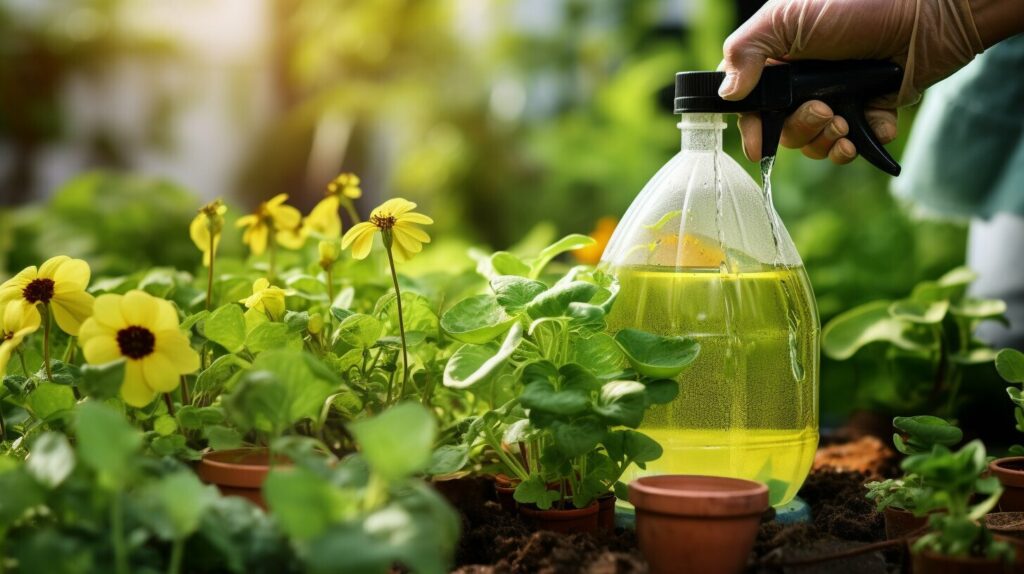
Conclusion
In conclusion, old vinegar should not be discarded as there are countless ways to repurpose it. From cleaning solutions to preserving pickles, cooking, and DIY projects, old vinegar can be used in numerous ways. It is an eco-friendly and cost-effective alternative to many cleaning and gardening products. Additionally, using it in laundry and as a natural odor remover can save money and reduce exposure to harsh chemicals.
Overall, I encourage you to think twice before disposing of your old vinegar and instead explore the many creative uses it offers. Not only will you be reducing waste, but you will also discover new ways to make your daily life more sustainable and efficient.
